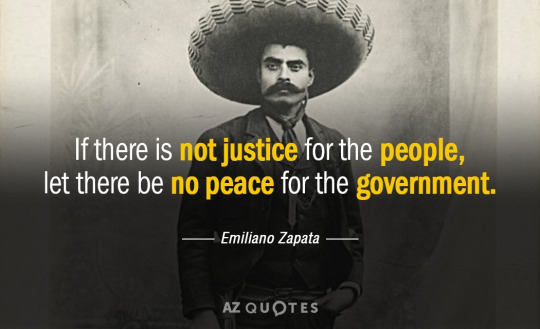#zapata
Text
Fotografía de Refugio Sánchez, líder zapatista y su grupo en Tepoztlán, Morelos. en el año de 1914

47 notes
·
View notes
Text
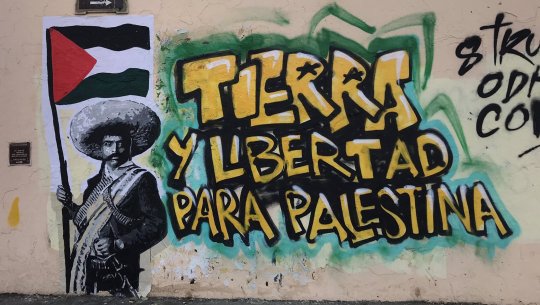
“Land & liberty for Palestine”
Seen in Oaxaca, Mexico
5K notes
·
View notes
Text

Marlon Brando (1985)
Art by Mort Drucker
#Comics#Mort Drucker#Marlon Brando#Film#Zapata#On The Waterfront#Godfather#Young Lions#1985#1980s#80s
44 notes
·
View notes
Text
iViva Zapata!

Emiliano Zapata Salazar was a Mexican revolutionary. He was a leading figure in the Mexican Revolution of 1910–1920, the main leader of the people's revolution in the Mexican state of Morelos, and the inspiration of the agrarian movement called Zapatismo.

Emiliano Zapata was born in the pueblo of Anenecuilco in the small state of Morelos (where this article is currently being written). Born second-youngest into a family of ten, Emiliano had six sisters—and of his three brothers, one, Eufemio, would also attain the rank of general for the Revolutionary Army.
At the age of nine, he saw firsthand the subjugation of the peasantry as wealthy landowners expanded their haciendas and dispossessed the poor’s land. When his father said nothing could be done, young Emiliano turned to him and said, “Nothing can be done? Well, when I am grown, I’ll make them return the land.”

Emiliano and Eufemio Zapata with their Wives - 1911 - by Hugo Brehme
At the age of 16, Emiliano’s mother died. Within the year, he would lose his father as well. An entrepreneurial youth, Zapata worked as a watermelon farmer and bought a team of mules to haul corn from local farms to the Chinameca Hacienda. Then, on June 15th, 1897, the rural forces of Cuernavaca arrested Emiliano during Anenecuilco’s town festival. His brother, Eufemio, secured his release from custody at gunpoint—and the Zapata brothers fled to the state of Puebla.

Zapata read the Plan de San Luis. In particular, he was drawn to Article 3 which addressed land reform, offering restitution to the land owners whose lands had been stolen. [...] Zapata joined an army of 60 peasants who took up arms to join the Mexican Revolution.
By March 10th, 1911, Zapata had mobilized this force—which had grown to 1,000 men calling themselves the Southern Maderistas, He adopted the Plan de San Luis and he was ready to take on the Mexican government—and the government didn’t disappoint. Emiliano Zapata soon found himself pursued by Aureliano Blanquet and his battalion.

Mexico 1911, Zapatista Colonel Amparo Salgado.
During this period, Zapata fought the battles of Chinameca, Tlayecac, Jojutla, Tlaquiltenango, Jonacatepec, and others. During this fighting, Pablo Torres Burgos would die, and Zapata was elected the leader of the Southern Maderistas on March 29th, 1911. At the heart of Zapata’s cause was agrarian reform—so much that the motto of their struggle became, “The land belongs to those who work it.”
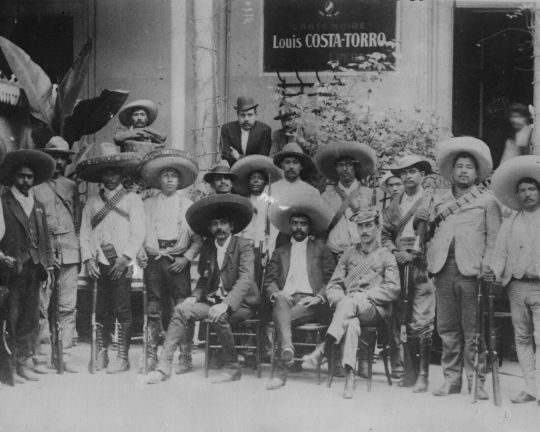
Mexican president Francisco I, met with Zapata in the National Palace. He offered Zapata a large plot of land in his home state of Morelos “as payment for his services to the revolution” if he would only lay down his arms.
Zapata declined the offer—slamming his Winchester pistol hard on Madero’s desk—and said:
No, Mr Madero. I did not rise up in arms to conquer lands and farms. I rose up in arms so that what was stolen can be returned to the people of Morelos. So then, Mr. Madero, either you fulfill what you promised us, to me and to the state of Morelos, or the Chichicuilota takes you and me. Zapata refused to become everything he had fought against: a hacienda owner who had stolen land from the peasants who farmed it. In November of 1911, Emiliano Zapata would form his own plan: the Plan of Ayala—written by Otilio E. Montaño—where its chief concern was the redistribution of the haciendas to the peasants who had worked the land.
Emiliano Zapata edited his Plan de Ayala document, leaving Zapata himself as the sole commander of the Liberation Army of the South—which now numbered 27,000 men.
Zapata continued his military campaign, taking Jonacatepec, Chilpancingo, Cuajimalpa, Xochimilco, and Milpa Alta. The Zapatistas were now a direct threat to Mexico City.
In September of 1914, using his base of operations in Cuernavaca as a temporary capital for his ad hoc government, Emiliano Zapata began relegating the land under his control to the towns themselves.
Zapata’s forces joined Pancho Villa’s. They named Eulalio Gutierrez as their provisional Mexican president—and together they denounced Carranza’s government. In November of 1914, Villa’s Northern Division and Zapata’s Liberation Army of the South conquered Mexico City. This catapulted Zapata to international fame.

General Tomás Urbina, General Pancho Villa & General Emiliano Zapata, in the National Palace in Mexico City, December 1914.
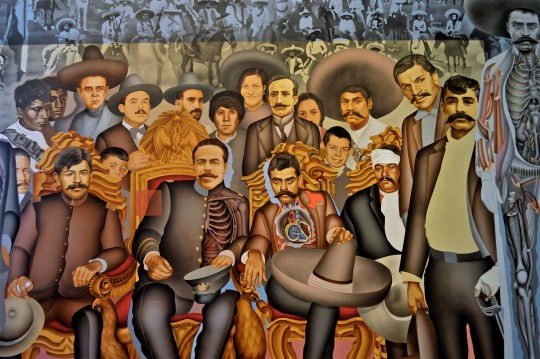
(The Arrival of Generals Zapata and Villa at the National Palace, December 6, 1914) by Arnold Belkin, 1979. - Museo Nacional de Historia
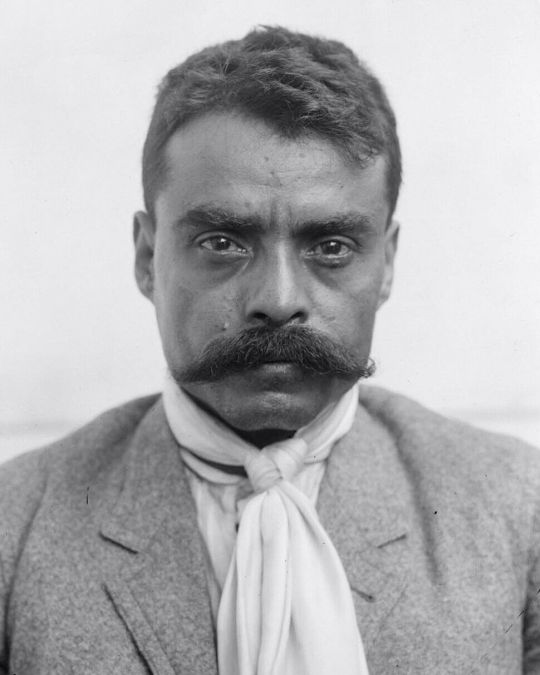
Emiliano Zapata, (born August 8, 1879, Anenecuilco, Mexico—died April 10, 1919, Morelos)
#emiliano zapata#zapata#eufemio zapata#pancho villa#Amparo Salgado#Plan de San Luis#Mexican Revolution#Plan of Ayala#agrarianism#Viva Zapata!
78 notes
·
View notes
Text

From @JoeCrowShoe
#burn the wagons#save the land#land defender#water defender#landback#aim#crazy horse#Tasunke Witco#greasy grass#little big horn#Custer died for your sins#tecumseh#zapata#Geronimo#john trudell#Leonard Peltier#free Leonard Peltier#climate change#ohlone territory
30 notes
·
View notes
Text

Arabic translation:
Long live Zapata - hero of the Mexican revolution - 1915
Long live Abd al Kader al Husseini - hero of the Palestinian revolution - 1948
https://www.palestineposterproject.org/poster/zapata-al-husayni
26 notes
·
View notes
Text
Emiliano Zapata montado em seu cavalo "As de Oros", Pachuca, México, por volta de 1911. Foto por Augustin Victor Casasola.
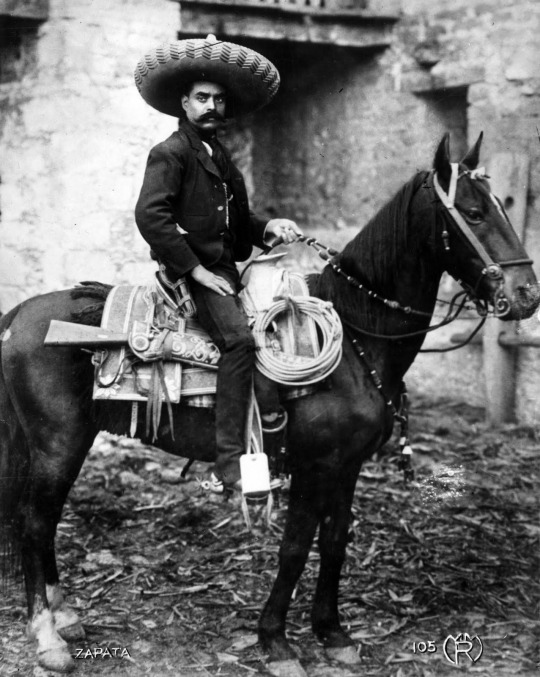
74 notes
·
View notes
Photo

31 notes
·
View notes
Text
Blindspot posting: starting to see why people ship Patterson and Zapata. Like, I do think it’s a bit of a stretch, but it’s a stretch that I am willing to make.
#i am literally hypermobile#i can bend all sorts of ways#also a lil gay#blindspot#zapata#patterson#tasha zapata#zapatterson
19 notes
·
View notes
Text

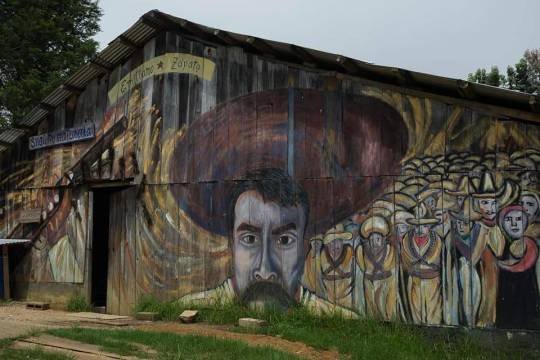
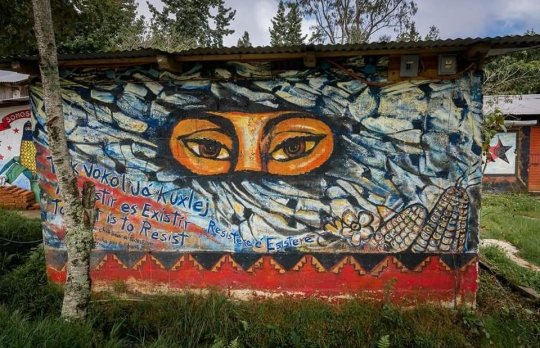

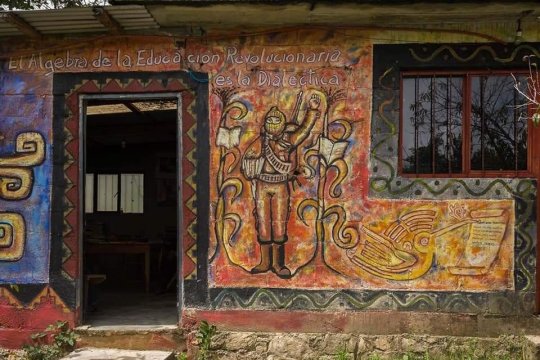


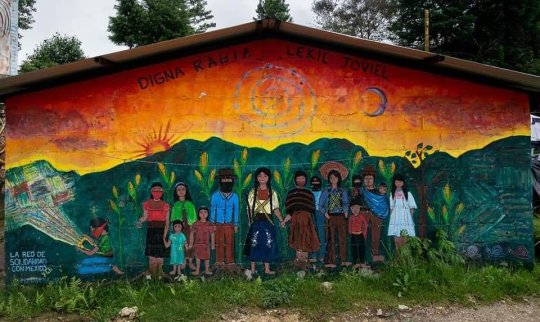
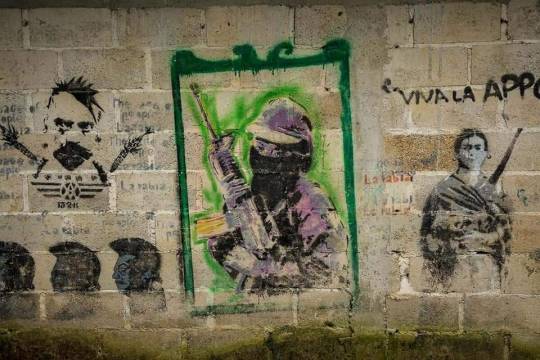

Radical murals seen around Oventic, an indigenous Zapatista village in Chiapas, Mexico.
On January 1st, 1994 the EZLN (Zapatista Army of National Liberation) launched an armed insurrection in Chiapas against the Mexican state and the NAFTA Free Trade Agreement.
The Zapatistas are a resistance movement of indigenous villagers in the mountains and jungles of Chiapas, Mexico’s poorest and southern-most state.
488 notes
·
View notes
Text

Treno zapatista, Cuernavaca, 1911
#zapata#emilianozapata#trenozapatista#treno#cuernavaca#ferrovie#rivoluzione#messico#mexico#porfirio#panchovilla#pancho#villa#zapatismo#rivoluzionemessicana#enzotraverso#saggio#campidelsapere#feltrinelli#storia#ferrovia#marx#engels
61 notes
·
View notes
Text

"Si el campesino quiere sembrar que lo haga en macetas, no en mis tierras", eso decían los hacendados; por eso cuando Zapata los llamó al levantamiento revolucionario, el campesino no lo dudó ni un momento, ya que no tenían nada que perder…
7 notes
·
View notes
Text
⚟ Pancho Villa ⚞

Villa with his elite cavalry detachment "los Dorados" just prior to the Battle of Ojinaga during the Mexican Revolution. January 1914.

Colorized
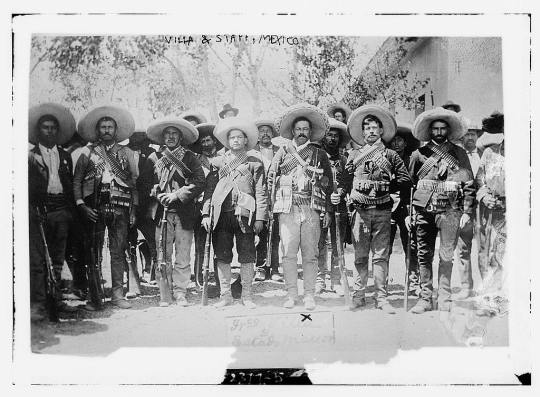
Francisco "Pancho" Villa and Staff, Mexico circa 1910

Zapata and Pancho Villa with their joint forces enter Mexico City on December 6, 1914.
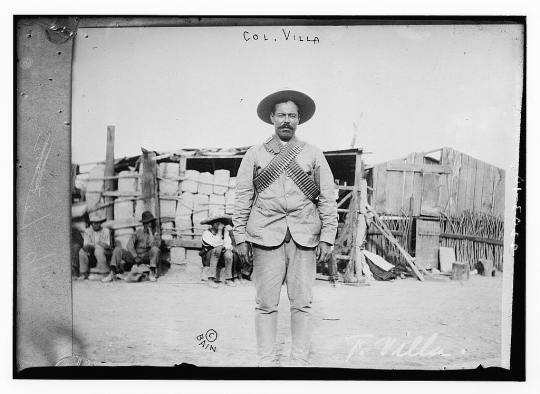
Pancho Villa, possibly taken the day of the capture of Ciudad Juarez, Chihuahua. May, 1911.
#pancho villa#bw#photography#vintage photography#1914#los dorados#battle of ojinaga#colorization#francisco pancho villa#emiliano zapata#zapata
2 notes
·
View notes
